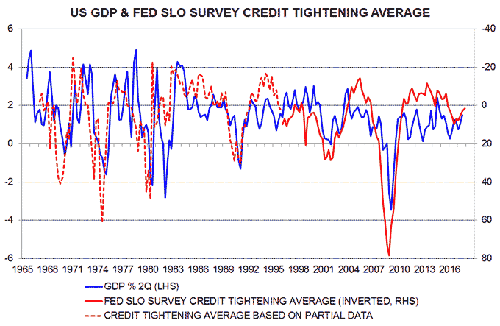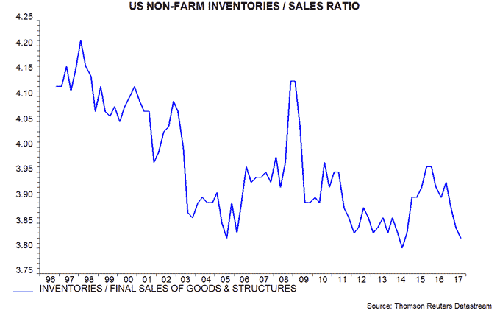
Janus Henderson: US bank credit loosening offsetting Fed restraint
Posts in the spring and summer suggested that US economic growth would pick up into early 2018 based on a rise in six-month real narrow money growth into August, an expected upswing in the Kitchin stockbuilding cycle into the first half of 2018 and a loosening of bank credit supply as the negative impact of a temporary tightening of funding markets in 2016 reversed.
09.11.2017 | 12:35 Uhr
The forecast of a positive impulse from bank credit supply is supported by the Fed’s October survey of senior loan officers. An average of the net percentages of banks tightening credit standards across various loan categories (commercial and industrial, commercial real estate, residential mortgages and consumer) fell further, consistent with rising near-term GDP momentum – see first chart.

As previously explained, looser bank credit is temporarily masking the negative economic impact of earlier Fed rate hikes. The danger is that apparent economic resilience will cause the Fed to overtighten over the next six to 12 months, laying the foundation for a recession in 2019-20.
The suggestion that the stockbuilding cycle remains positive for near-term economic prospects, following a 0.7 percentage point contribution to third-quarter GDP expansion of 3.0% annualised, is supported by a further decline in the ratio of inventories to sales in the three months to end-September – second chart.

Six-month real narrow money growth fell back sharply in September, suggesting that economic momentum will peak in early 2018. Weekly data through 23 October, however, indicate a partial rebound last month – monetary trends are not yet giving grounds for pessimism about economic prospects for later in 2018.



Diesen Beitrag teilen: